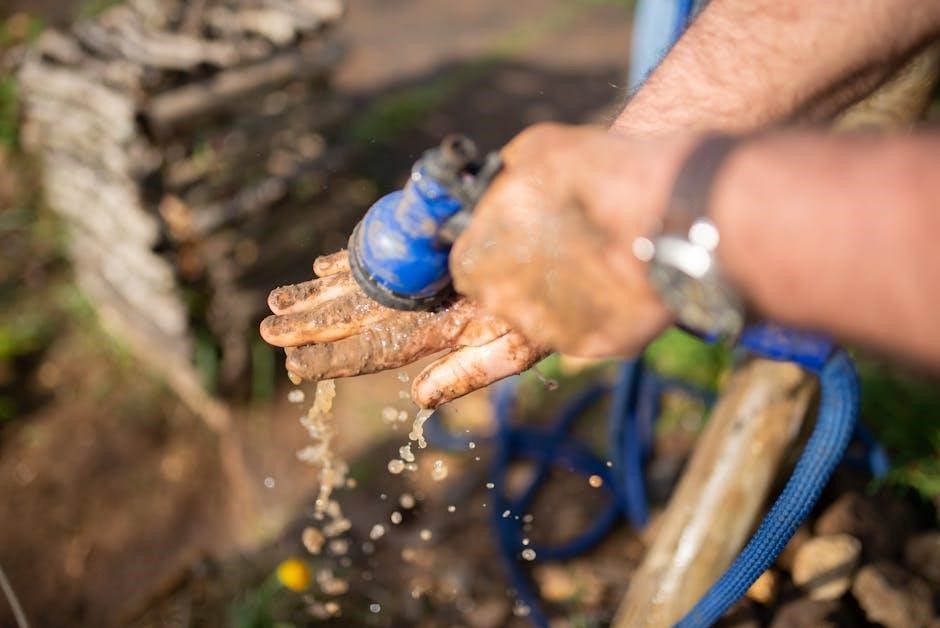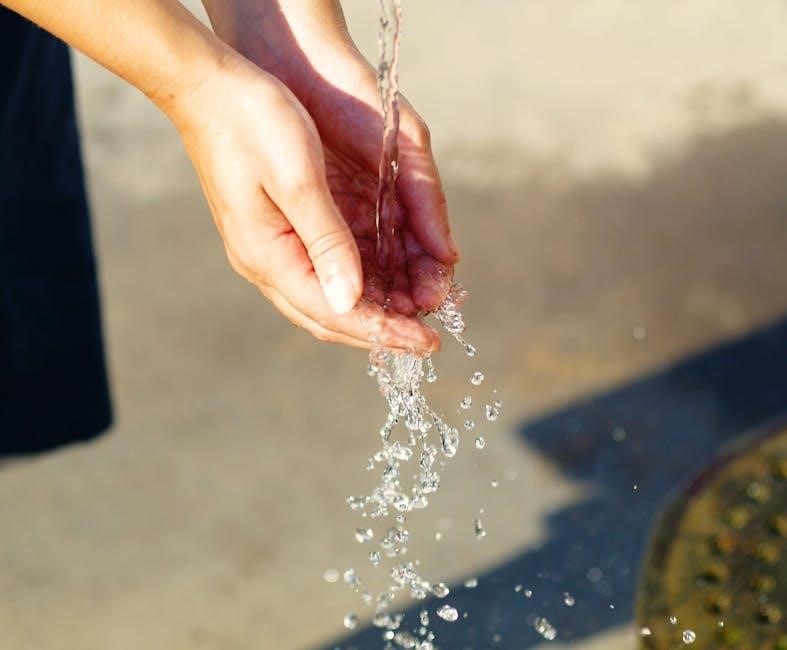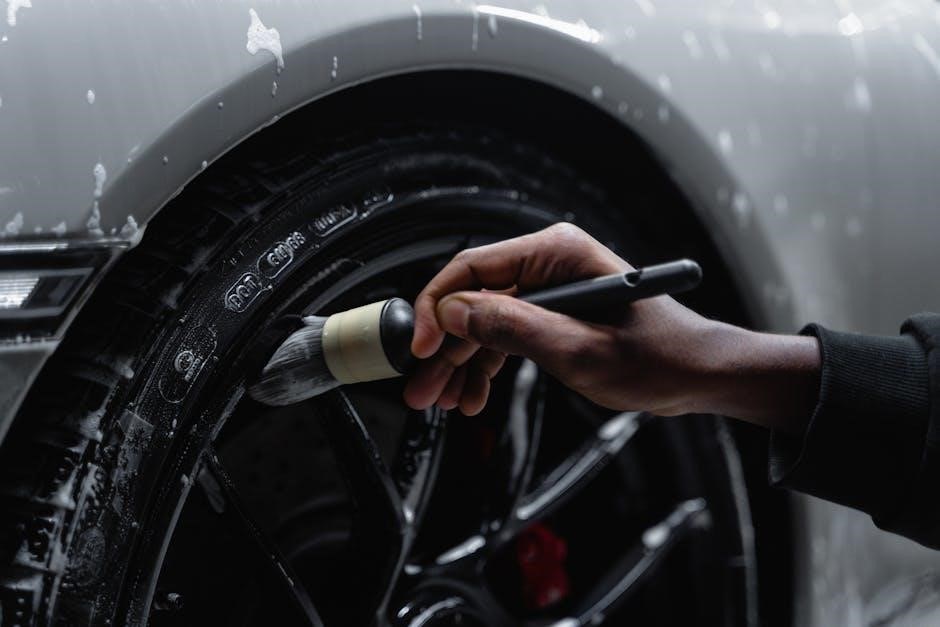
Water Heater Manuals: A Comprehensive Guide

This comprehensive guide aims to provide you with a thorough understanding of water heater manuals. These manuals are crucial for safe installation, operation, and maintenance. We will explore different types of water heaters and the critical information contained within their respective manuals to assist you.
Understanding Water Heater Types
Water heaters come in various types, each with its own set of characteristics, advantages, and disadvantages. Understanding these differences is crucial when selecting the right water heater for your needs and interpreting the information provided in its manual. The most common types include tank water heaters, which store a reservoir of hot water, and tankless water heaters, which heat water on demand.
Heat pump water heaters offer energy-efficient operation by transferring heat from the surrounding air or ground. Solar water heaters utilize solar energy to heat water, reducing reliance on traditional energy sources. Each type has specific installation requirements, operating procedures, and maintenance needs, all of which are detailed in the water heater’s manual.
The manual will provide model-specific information, including technical specifications, safety precautions, and troubleshooting tips. Understanding the type of water heater you have is the first step in effectively using its manual to ensure safe and efficient operation. The manual will also describe the specific features and functionalities unique to that particular type of water heater.
Tank Water Heaters
Tank water heaters are a traditional and widely used type of water heating system. They function by heating and storing a volume of water within an insulated tank, ready for use when needed. The manuals for tank water heaters provide detailed information on their components, including the heating element, thermostat, and pressure relief valve. Understanding these components is essential for proper maintenance and troubleshooting.

The manual will also specify the tank’s capacity, energy efficiency rating, and recommended temperature settings. Installation guidelines are crucial for ensuring safe and efficient operation, including proper venting and plumbing connections. Operating instructions cover topics such as adjusting the thermostat, draining the tank, and preventing sediment buildup. Safety precautions are paramount, emphasizing the importance of pressure relief valve maintenance and avoiding flammable materials near the heater.
Troubleshooting tips address common issues like leaks, insufficient hot water, and unusual noises. The manual will also include information on the warranty and recommended maintenance schedule to prolong the lifespan of the tank water heater. Carefully reviewing the manual is essential for understanding the specific features and requirements of your tank water heater model.
Tankless Water Heaters
Tankless water heaters, also known as on-demand water heaters, offer a different approach to heating water compared to traditional tank models. Instead of storing hot water, they heat water only when needed, providing a continuous supply without the limitations of a tank. The manuals for tankless water heaters are crucial for understanding their unique operation and maintenance requirements.
These manuals detail the unit’s specifications, including its flow rate, energy efficiency, and power requirements. Installation guidelines are particularly important for tankless models, as they often require specific gas or electrical connections and venting systems. Operating instructions explain how to adjust the temperature settings and understand the unit’s display and error codes.
Maintenance procedures for tankless water heaters typically involve descaling to remove mineral buildup, which can affect their performance. Troubleshooting sections address common issues like cold water sandwiches, inconsistent temperatures, and ignition problems. Safety precautions emphasize the importance of proper venting to prevent carbon monoxide poisoning. The manual also includes warranty information and recommendations for professional servicing to ensure the longevity and optimal performance of your tankless water heater. Reviewing the manual thoroughly is essential for safe and efficient operation.
Heat Pump Water Heaters

Heat pump water heaters, also known as hybrid water heaters, represent an energy-efficient alternative to traditional electric water heaters. They operate by transferring heat from the surrounding air to the water tank, rather than directly heating the water with electric resistance. Understanding the specifics of your heat pump water heater is key. The manuals are crucial for correct setup, use and maintenance.
The manuals provide detailed installation instructions, including clearance requirements and proper venting to ensure optimal performance. Operating instructions outline the different operating modes, such as heat pump mode, electric resistance mode, and vacation mode, allowing you to customize the unit’s operation to your needs. Maintenance procedures include cleaning the air filter regularly and inspecting the condensate drain to prevent clogs.
Troubleshooting sections address common issues like reduced heating capacity, unusual noises, and error codes. Safety precautions emphasize the importance of proper grounding and avoiding obstructions around the unit’s air intake. The manual also includes warranty information and recommendations for professional servicing to maintain the unit’s efficiency and lifespan. Reviewing the manual is essential for maximizing energy savings and ensuring the long-term reliability of your heat pump water heater.
Solar Water Heaters
Solar water heaters harness the sun’s energy to heat water, offering an environmentally friendly and cost-effective solution for domestic hot water needs. These systems typically consist of solar collectors, a storage tank, and a backup heating element for periods of low sunlight. Solar water heater manuals provide comprehensive information on installation, operation, and maintenance specific to these systems.
The manuals detail the proper placement and orientation of solar collectors to maximize sunlight exposure, as well as the correct plumbing connections between the collectors, storage tank, and existing plumbing system. Operating instructions explain how to monitor the system’s performance, adjust settings for optimal efficiency, and utilize the backup heating element when necessary. Maintenance procedures include regular inspection of the collectors for leaks or damage, cleaning the collector surfaces to remove debris, and checking the system’s glycol levels to prevent freezing.
Troubleshooting sections address common issues such as insufficient hot water, leaks, and system malfunctions. Safety precautions emphasize the importance of hiring qualified professionals for installation and maintenance, as well as protecting the system from freezing temperatures. The manual also includes warranty information and tips for maximizing the system’s lifespan. Consulting the manual ensures efficient operation and long-term performance of your solar water heater.
Important Safety Precautions in Manuals
Water heater manuals invariably dedicate a significant section to safety precautions, underlining the potential hazards associated with these appliances. These precautions are paramount to preventing accidents, injuries, and property damage. Manuals emphasize the importance of professional installation, highlighting the risks of improper gas or electrical connections. They often caution against operating the water heater if any parts are damaged or missing, and stress the need for regular inspections to identify potential problems early on.
The manuals typically include warnings about flammable materials, advising users to keep such items away from the water heater to prevent fire hazards. They also address the risk of scalding, recommending temperature settings that minimize the possibility of burns. Moreover, manuals often provide instructions on how to safely shut off the gas or electricity supply in case of emergency. Pressure relief valve (PRV) safety is always heavily emphasized.
Furthermore, the manuals warn against tampering with the water heater’s components, emphasizing that only qualified technicians should perform repairs or maintenance. They also stress the importance of following all local codes and regulations during installation and operation. Ignoring these safety precautions can lead to serious consequences, making it crucial to carefully read and adhere to the guidelines outlined in the water heater manual. Safety is always the priority.
Installation Guidelines from Manuals
Water heater manuals provide comprehensive installation guidelines that are crucial for ensuring the safe and efficient operation of the appliance. These guidelines typically outline the specific steps required for proper installation, including plumbing and electrical connections. Manuals often emphasize the importance of hiring a qualified technician to perform the installation, as improper installation can lead to safety hazards and void the warranty.
The guidelines also specify the necessary clearances around the water heater, ensuring adequate ventilation and access for maintenance. They may include diagrams and illustrations to aid in the installation process, providing visual guidance on how to properly connect the water lines and electrical wiring; Furthermore, manuals often address the importance of using the correct type and size of piping and fittings to prevent leaks and ensure proper water flow.
Moreover, the installation guidelines may cover specific requirements for different types of water heaters, such as tankless or solar models. These requirements may include the need for specialized venting systems or additional components. The manuals also emphasize the importance of following all local codes and regulations during installation, ensuring compliance with safety standards. By adhering to these installation guidelines, homeowners can ensure that their water heater is installed correctly and operates safely and efficiently for years to come. Ignoring these guidelines can lead to water damage.
Operating Instructions in Water Heater Manuals
Water heater manuals meticulously detail the operating instructions essential for safe and efficient use. These instructions typically cover a range of topics, beginning with initial start-up procedures. Manuals explain how to properly fill the tank, purge air from the system, and ignite the pilot light (if applicable). They also provide guidance on setting the thermostat to the desired temperature, balancing comfort with energy conservation. The manuals often caution against setting the temperature too high, as this can lead to scalding and increased energy consumption.
Furthermore, the operating instructions may include information on adjusting the water pressure and flow rate. They may also describe the function of various controls and indicators on the water heater, such as temperature gauges and pressure relief valves. Manuals often provide specific instructions for operating different types of water heaters, such as gas, electric, or tankless models. These instructions may include information on adjusting the gas pressure, setting the electric timer, or activating the on-demand heating system.
Additionally, the operating instructions may cover troubleshooting common issues, such as low water pressure or inconsistent water temperature. They may also include information on how to shut down the water heater in case of emergency, such as a leak or power outage. By carefully following these operating instructions, homeowners can ensure the safe and efficient operation of their water heater and prolong its lifespan. Proper operation avoids damage.
Maintenance Procedures Described in Manuals
Water heater manuals provide crucial guidance on routine maintenance, ensuring optimal performance and extending the lifespan of the appliance. These procedures typically involve several key steps. Regularly draining the tank to remove sediment buildup is paramount, preventing corrosion and maintaining heating efficiency. The manual details the proper method for draining, including safety precautions and the frequency recommended for your specific model.
Checking and testing the pressure relief valve is another critical maintenance task. The manual explains how to manually activate the valve to ensure it’s functioning correctly, preventing dangerous pressure accumulation. Inspecting the anode rod is also crucial, as it protects the tank from corrosion. The manual provides instructions on how to access and assess the anode rod’s condition, recommending replacement when necessary.
Furthermore, manuals often include guidance on inspecting and cleaning the burner assembly (for gas heaters) or the heating elements (for electric heaters). These procedures help maintain efficient heating and prevent malfunctions. Homeowners should also inspect the venting system, ensuring proper exhaust flow and preventing carbon monoxide buildup. Finally, the manual may recommend periodic professional inspections to identify and address potential issues before they escalate, ensuring safe and reliable operation. Regular maintenance prevents costly repairs.
Troubleshooting Tips Found in Manuals
Water heater manuals are invaluable resources when troubleshooting common issues. They offer a systematic approach to diagnosing problems, often starting with a list of frequently asked questions and their corresponding solutions. A common problem is the lack of hot water. The manual will guide you through checking the power supply, gas valve, or heating elements, depending on the type of water heater.
Another frequent issue is noisy operation, such as rumbling or popping sounds. The manual usually explains that these noises are often caused by sediment buildup in the tank. It provides instructions on how to flush the tank to remove sediment, resolving the noise issue. Leaks are also a common concern. The manual helps identify the source of the leak, whether it’s from the tank, connections, or pressure relief valve, and suggests appropriate actions, from tightening fittings to replacing components.
In cases of insufficient hot water, the manual might recommend checking the thermostat setting and adjusting it accordingly. It may also advise inspecting the dip tube, which directs cold water to the bottom of the tank. A damaged dip tube can cause cold water to mix with hot water, reducing the overall hot water supply. Manuals also address issues with water discoloration or unusual odors, often linking them to water quality problems or the need for tank cleaning. By following the troubleshooting steps in the manual, many common water heater problems can be resolved efficiently.
Understanding Model Numbers and Specifications
Water heater manuals provide crucial information regarding model numbers and specifications, which are essential for proper maintenance, repairs, and replacement part identification. The model number is a unique identifier assigned by the manufacturer, often found on a nameplate affixed to the water heater. Decoding the model number can reveal valuable details about the unit’s capacity, energy source (electric, gas, propane), and specific features.
Specifications outline the technical characteristics of the water heater. These include tank capacity (measured in gallons or liters), input BTU (for gas models), wattage and voltage (for electric models), and recovery rate (the amount of hot water the unit can produce in an hour). Understanding the tank capacity helps determine if the water heater meets the household’s hot water demands. The input BTU or wattage indicates the unit’s heating power, affecting how quickly it heats water.
The recovery rate is particularly important when assessing the water heater’s ability to keep up with hot water usage during peak times. Other specifications include dimensions, weight, insulation type, and warranty information. Knowing these details is crucial when replacing the unit or when ensuring proper clearances during installation. Consulting the manual for model numbers and specifications allows for informed decisions regarding maintenance and upgrades, ensuring optimal performance and longevity of the water heater.
Warranty Information Provided in Manuals
Water heater manuals are critical resources for understanding the warranty coverage provided by the manufacturer. This section typically outlines the duration of the warranty, what components are covered (e.g., tank, parts), and any specific conditions that must be met to keep the warranty valid. It’s essential to carefully review this section upon purchasing a new water heater.
Warranties often have different coverage periods for the tank and other components. For example, the tank might have a longer warranty period than the individual parts. The manual will detail the manufacturer’s responsibilities in case of a defect or failure during the warranty period, such as repair or replacement. It also specifies what is not covered, such as damage from improper installation, neglect, or freezing.
The warranty information will also include instructions on how to make a warranty claim, including required documentation like proof of purchase and installation records. Following the manufacturer’s guidelines for installation and maintenance is crucial to avoid voiding the warranty. Understanding the warranty information ensures that you can protect your investment and take appropriate action if any issues arise with your water heater within the specified timeframe. Keeping the manual accessible is vital for future reference.
Energy Saving Tips in Water Heater Manuals
Water heater manuals often include a section dedicated to energy-saving tips, aimed at reducing energy consumption and lowering utility bills. These tips can range from simple adjustments to more involved maintenance procedures. A common recommendation is to set the water heater thermostat to an optimal temperature, typically around 120°F (49°C), which is usually sufficient for most household needs while minimizing heat loss.

Insulating the water heater tank, especially in older models that lack sufficient insulation, is another effective way to conserve energy. The manuals might suggest using an insulation blanket specifically designed for water heaters. Additionally, insulating the first few feet of hot water pipes can help reduce heat loss as water travels to faucets and appliances.
Manuals may also advise on reducing hot water usage by fixing leaky faucets, installing low-flow showerheads, and washing clothes in cold water whenever possible. Regularly draining the water heater to remove sediment buildup can improve its efficiency, as sediment acts as an insulator, hindering heat transfer. Finally, consider upgrading to a more energy-efficient water heater model, such as a tankless or heat pump water heater, when it’s time for a replacement, as these models are designed to minimize energy waste and save money in the long run.